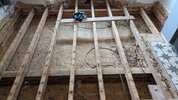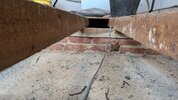- Joined
- 17 Oct 2020
- Messages
- 19
- Reaction score
- 1
- Country

I'm insulating a floor today with 100mm pir and the joists are also 100mm. Not a problem, however the joists rest on beams in several places.
I'm worried about cutting off the airflow in the space underneath.
There are holes in places where the brick hits the concrete base but I'm concerned these aren't enough. Would cutting the beam in places be advised of should I leave well alone?
I've also considered tapering the 100mm up to 50 across those points.
Images attached for further explanation

I'm worried about cutting off the airflow in the space underneath.
There are holes in places where the brick hits the concrete base but I'm concerned these aren't enough. Would cutting the beam in places be advised of should I leave well alone?
I've also considered tapering the 100mm up to 50 across those points.
Images attached for further explanation


